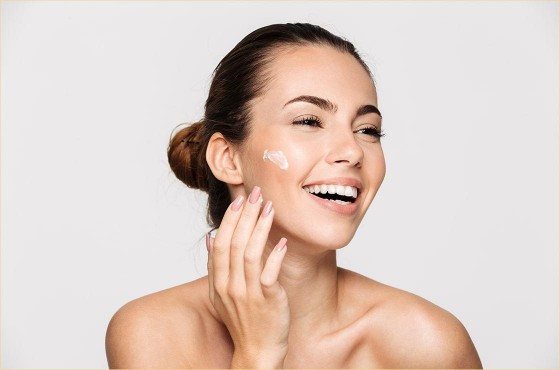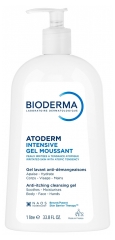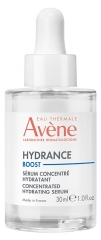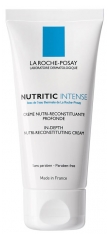Moisturising your skin:
supple and luminous skin in every season
Written by Marion, Aesthetician/Cosmetician | published on | updated on 18/06/2024

Taking care of your skin helps to avoid minor discomfort such as redness or tightness while also helping it exercise its function to protect our body. How should it be hydrated and nourished in accordance with its nature and needs throughout the year?
The skin, our body’s defensive rampart
The skin is a complex organ with multiple functions. It covers about 2 m² and represents 17% of our body weight on average. It consists of three layers:
- The epidermis varies in thickness from 0.05 mm (around the eyes) to 5 mm (under the soles of the feet). It is composed of 13% melanocytes, cells that pigment the skin, 2-8% Langerhans cells that are part of the immune system, and 80% cells called keratinocytes. The latter evolve over 21 days, progressing through five stages before rising to enrich the horny layer on the surface. This stratum corneum consists of dead cells bound by lipids. It also includes the pores of the sebaceous glands, which secrete sebum, and the sweat glands, which secrete sweat composed of water as well as fatty acids, amino acids and lactic acid. All of this forms the hydrolipidic film.
- The dermis, the middle layer of the skin, consists mainly of collagen, elastin and connective tissue bathed in hyaluronic acid, which helps to retain water. The dermis also contains blood and lymphatic vessels, sensory receptors, sebaceous and sweat glands, as well as hair roots.
- The hypodermis is the lowermost layer of the skin and contains mainly adipocytes, rich in fat.
This structure allows the skin to envelop our body and protect us from cold (by contracting its blood vessels and thanks to the fat in the hypodermis), from heat (thanks to perspiration), from microbes and fungi (due to its acidity and the thickness of the horny layer), from bumps (thanks to the firmness of the dermis and the protective mat of the hypodermis), from radiation, allergens and some chemical damage. It is also the home of our tactile sensations. Finally, it is a reserve of nutrients. These are all good reasons to take good care of it!
The needs of dry and atopic skin
Very dry skin tends to tug and lack suppleness. Such dehydrated skin is marked more easily by expression lines, is prone to redness and itching, and develops what is sometimes called a "crocodile skin" effect due to excessive peeling. Cold causes this type of skin to become chapped and cracked, which can be painful. As for atopic skin, it is particularly dry and sensitive to allergens, with eczema flare-ups in the event of contact with an irritating factor. In both cases, the hydrolipidic film is not sufficiently present and effective, and the skin lacks water.
Dry and atopic skin requires moisturising and nourishing treatments in both summer and winter. How should you properly moisturise your skin? After your morning cleansing routine, as well as after a shower or bath, especially if you have hard water, you should apply creams rich in lipid-replenishing and moisturising ingredients. We prefer smooth and rich textures containing plant oils, such as avocado, argan or coconut oil, or even aloe vera extract or urea. Use lipid-enriched and soap-free products when showering. Be careful to not over-cleanse or use abrasive products that prevent the hydrolipidic film from regenerating. The skin renews itself more at night. To help it and to moisturise it properly, give it a good night cream and remember to drink plenty of water in every season.
How should oily skin be moisturised?
To take care of oily skin, you would think you should aggressively remove the layer of sebum that gives the face that slightly shiny appearance. Although it does have to be cleansed to purify it, it does not need to be done abrasively. Indeed, that would only amplify the problem, since the skin would react by producing even more sebum. It is necessary to keep the skin as natural as possible and opt for mild products, milks or moisturising toners rather than balms or creams. A scrub can have a positive effect and brighten the complexion, but no more than once every two weeks.
Beauty comes from within ...
Treatment products protect the hydrolipidic film or allow it to replenish itself, but the food we eat and water we drink also nourish the skin. For beautiful, well hydrated skin, you must drink at least 1.5 litres of water per day. As for the nutrients that are necessary for healthy skin, B-group vitamins are found in brewer’s yeast, and omega-3s are found in fish, especially fatty fish such as sardines, salmon or mackerel. Be careful to limit foods containing bad fats or sugar, such as pastries, deli meats and sweets, which promote acne.
Nourishing the skin throughout the seasons
Our skin is often more beautiful in the summer: a pretty tanned complexion, less acne, oily skin dried by the sun. Oily skin is smoother and has fewer imperfections because the sun dries them out. However, salt from seawater, chlorine from swimming pools, and sand all irritate the skin. So we often have the unpleasant surprise of seeing all those little imperfections come back in record time in the autumn. Skin prone to acne often sees a fresh outbreak of small pimples at that time, while very dry skin becomes rougher and duller. To avoid this, it is necessary to cleanse the skin thoroughly to remove the traces of salt and chlorine in the summer, properly moisturise the skin in the evening, and apply sunscreen during the day. In the winter, gentle moisturisers should be used on the entire body in the morning and evening, as well as after a shower. Cocooncenter is full of high-quality moisturising skin care products for all skin types.
Caring for your skin means caring for your appearance and health, but it’s more than that, because skin is much more than just an envelope of cells, it’s also a barrier to germs. And that’s a good reason why it should not be neglected!
To moisturise your skin, remember these three key points:
- A few minutes of care in the morning and evening, all year round, is all it takes to keep skin healthy, supple and young for longer.
- Make sure you eat a balanced diet, have a healthy lifestyle and drink enough to protect the skin and reduce its imbalances.
- Be careful, moisturising and nourishing creams do not replace sunscreen, which is essential in summer to reduce the risk of cancer.



























